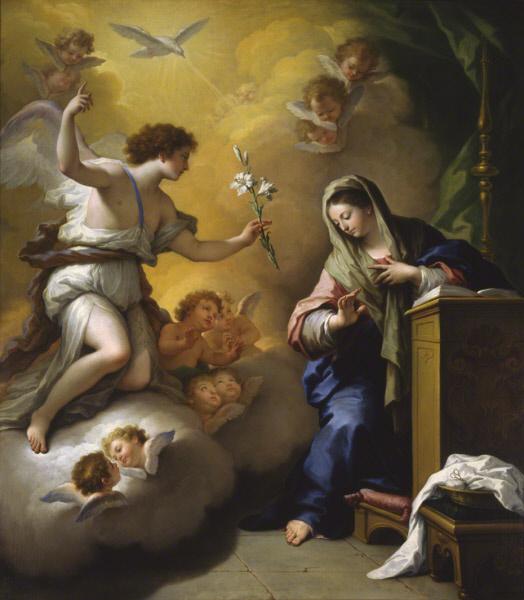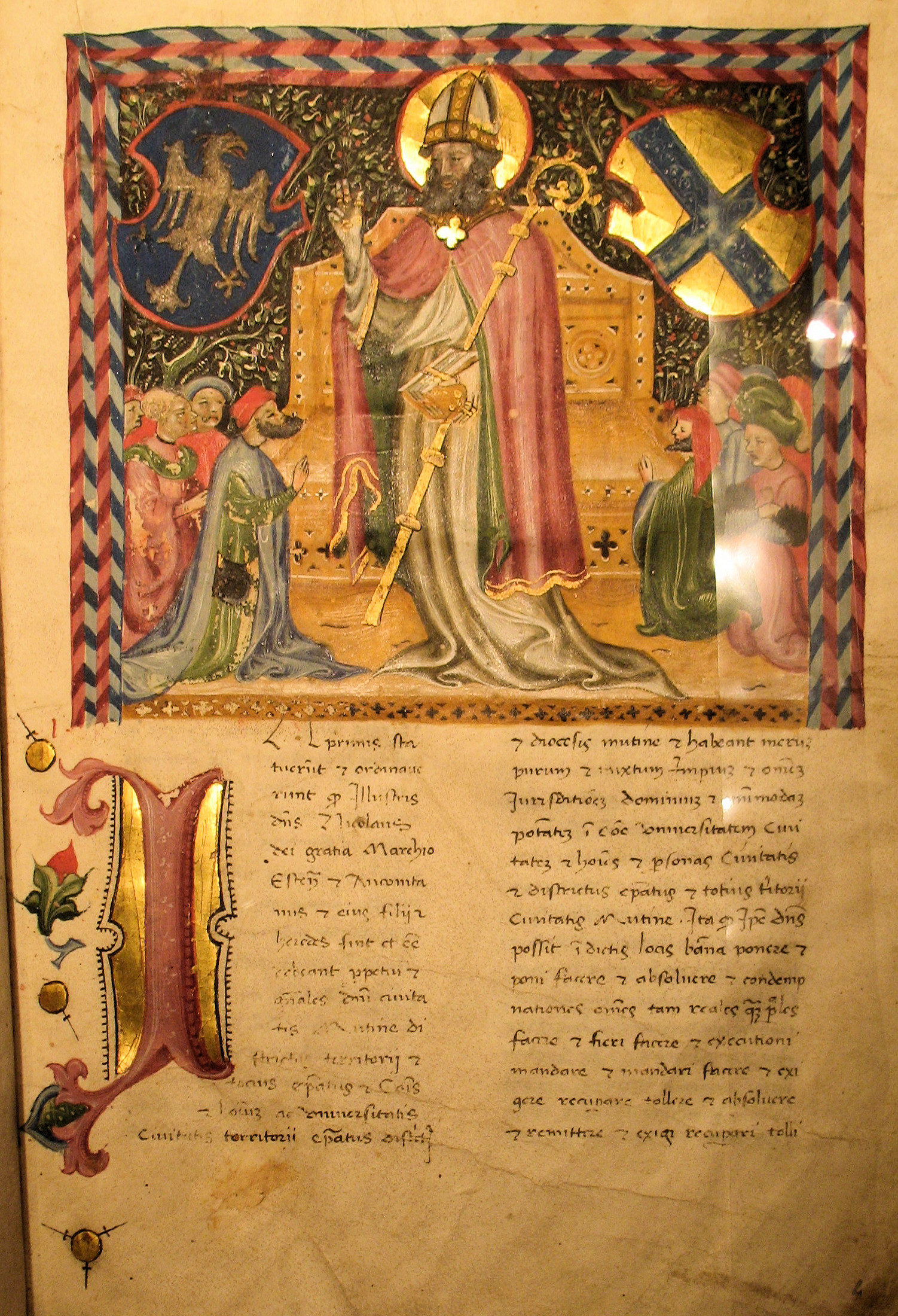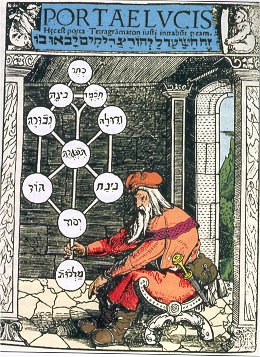|
Uriel
Uriel or Auriel ( he, אוּרִיאֵל ''ʾŪrīʾēl'', " El/God is my flame"; el, Οὐριήλ ''Oúriēl''; cop, ⲟⲩⲣⲓⲏⲗ ''Ouriēl''; it, Uriele; Geʽez and Amharic: or ) is the name of one of the archangels who is mentioned in the post-exilic rabbinic tradition and in certain Christian traditions. He is well known in the Russian Orthodox tradition and in folk Catholicism (in both of which he is considered to be one of the seven major archangels) and recognized in the Anglican Church as the fourth archangel. He is also well known in European esoteric medieval literature. Uriel is also known as a master of knowledge and archangel of wisdom. In apocryphal, kabbalistic, and occult works, Uriel/Auriel has been equated (or confused) with Urial, Nuriel, Uryan, Jeremiel, Vretil, Sariel, Suriel, Puruel, Phanuel, Jacob, Azrael, and Raphael. In the Secret Book of John, an early Gnostic work, Uriel is placed in control over the demons who help Yaldabaoth ... [...More Info...] [...Related Items...] OR: [Wikipedia] [Google] [Baidu] |
Archangel
Archangels () are the second lowest rank of angel in the hierarchy of angels. The word ''archangel'' itself is usually associated with the Abrahamic religions, but beings that are very similar to archangels are found in a number of other religious traditions. Archangels also appear in the religious texts of Gnosticism. The English word ''archangel'' is derived from Greek ἀρχάγγελος (arkhángelos), the Greek prefix "arch-" meaning "chief". A common misconception is that archangels are the highest rank of angel, this misconception stems from John Milton's ''Paradise Lost'' and likely confusion over the "arch-" prefix. Description Michael and Gabriel are recognized as archangels in Judaism, Islam, and by most Christians. Some Protestants consider Michael to be the only archangel. Raphael—mentioned in the deuterocanonical Book of Tobit—is also recognized as a chief angel in the Catholic and Eastern Orthodox churches. Gabriel, Michael, and Raphael are v ... [...More Info...] [...Related Items...] OR: [Wikipedia] [Google] [Baidu] |
Flaming Sword (mythology)
A flaming sword is a sword which is glowing with a flame which is produced by some supernatural power. Flaming swords have existed in legends and myths for thousands of years. In Sumerian mythology, the deity known as Asaruludu is "the wielder of the flaming sword" who "ensures the most perfect safety". Abrahamic sources According to the Bible, a flaming sword ( he, להט החרב ''lahat chereb'' or literally "flame of the whirling sword" he, להט החרב המתהפכת ''lahaṭ haḥereb hammithappeket'') was entrusted to the cherubim by God to guard the gates of Paradise after Adam and Eve were banished (Genesis 3:24). Scholars have variously interpreted the sword as a weapon of the cherubim, as lightning, as a metaphor, as an independent divine being, or even as a figurative description of bladed chariot wheels. In Kabbalah, the flaming sword represents the order which the sefirot were created in, also known as “''the path of the flaming sword.”'' Eastern Orth ... [...More Info...] [...Related Items...] OR: [Wikipedia] [Google] [Baidu] |
Jerahmeel (archangel)
The Hebrew name Jerahmeel ( Hebrew: יְרַחְמְאֵל ''Yəraḥmə ʾēl'', Tiberian: ''Yăraḥmē̆ʾēl,'' "God shall have mercy"), which appears several times in the Tanakh (see the article Jerahmeel), also appears in various forms as the name of an archangel in books of the intertestamental and early Christian periods. In the deuterocanonical book 2 Esdras, also known as 4 Ezra, which has come down to us in Latin and appears as an appendix to the Vulgate, as well as being canonical in the Russian and Ethiopian biblical canons. There is a reference in chapter 4 verse 36, to Jeremiel (in the Latin Ieremihel), which, however, does not occur in all the manuscripts. Other versions have Remiel or Uriel. In this passage the angel or angels (Uriel is also there) are answering Ezra's many questions about heaven and hell. Jeremiel (under any of his name alterations: Eremiel, Remiel, etc.) had a very dour yet comforting duty in the pre-Christian eras. He is mentioned in Chapter ... [...More Info...] [...Related Items...] OR: [Wikipedia] [Google] [Baidu] |
Sariel
Sariel (Hebrew language, Hebrew & Aramaic: שָׂרִיאֵל ''Śārīʾēl'', "God is my Ruler"; Greek language, Greek: Σαριηλ ''Sariēl'', cop, ⲥⲟⲩⲣⲓⲏⲗ ''Souriēl''; Amharic: ሰራቁያል ''Säraquyael'', ሰረቃኤል ''Säräqael'') is an archangel, mainly from Judaism, Judaic tradition. Other possible versions of his name are Suriel, Suriyel (in some Dead Sea Scrolls translations), Seriel, Sauriel, Saraqael, Sarakiel, Suruel, Surufel, and Souriel. In 1 Enoch (20:6), he is said to be "one of the [seven] holy angels [who watch], who is set over the spirits, who sin in the spirit". Origen identified Suriel as one of seven angels who are considered primordial powers by the Ophites. In Gnosticism, Sariel is invoked for his protective powers. He is commemorated in the calendar of the Coptic Orthodox Church on 27 Tobi in the Coptic calendar. He is not to be confused with the fallen Watcher (angel), watcher Sahariel (Hebrew language, Hebrew & Aramaic: ש� ... [...More Info...] [...Related Items...] OR: [Wikipedia] [Google] [Baidu] |
Nuriel
Nuriel ( he, נוּרִיאֵל ''Nūrīʾēl;'' meaning: " El is my fire") is an angel in Jewish mythology who is responsible for hailstorms. In Jewish legend, Moses encountered Nuriel in the 2nd heaven. It is said in the Zohar that when a person opens his lips during the weekdays at Arvit (the evening prayer), an eagle descends to carry the prayer of the night upon its wings. (This eagle is called) Nuriel. He is called Uriel from the aspect of Chesed and Nuriel from the aspect of Gevurah, which is a burning fire about which it is written: "A fiery stream issued and came forth" (Daniel 7:10). According to the Zohar, Nuriel governs Virgo. Davidson, Gustav (1967), A Dictionary of Angels, Including The Fallen Angels', Entry: Nuriel, Free Press, p. 209, Library of Congress Catalog Card Number: 66-19757, He is 300 parasangs (approx. 5.6 km) tall and has an army of 50 myriads of angels (= 500,000) "all fashioned out of water and fire." The height of Nuriel is exceeded only by ... [...More Info...] [...Related Items...] OR: [Wikipedia] [Google] [Baidu] |
Geʽez
Geez (; ' , and sometimes referred to in scholarly literature as Classical Ethiopic) is an ancient Ethiopian Semitic language. The language originates from what is now northern Ethiopia and Eritrea. Today, Geez is used as the main liturgical language of the Ethiopian Orthodox Tewahedo Church and Eritrean Orthodox Tewahedo Church, the Ethiopian Catholic Church and Eritrean Catholic Church, and the Beta Israel Jewish community. The closest living languages to Geez are Tigre and Tigrinya, with lexical similarity at 71% and 68%, respectively. Most linguists believe that Geez does not constitute a common ancestor of modern Ethio-Semitic languages but became a separate language early on from another hypothetical unattested common language. Phonology Vowels Historically, has a basic correspondence with Proto-Semitic short and , with short , the vowels with Proto-Semitic long respectively, and with the Proto-Semitic diphthongs and . In Geʽez there still e ... [...More Info...] [...Related Items...] OR: [Wikipedia] [Google] [Baidu] |
Kabbalah
Kabbalah ( he, קַבָּלָה ''Qabbālā'', literally "reception, tradition") is an esoteric method, discipline and school of thought in Jewish mysticism. A traditional Kabbalist is called a Mekubbal ( ''Məqūbbāl'' "receiver"). The definition of Kabbalah varies according to the tradition and aims of those following it, from its origin in medieval Judaism to its later adaptations in Western esotericism ( Christian Kabbalah and Hermetic Qabalah). Jewish Kabbalah is a set of esoteric teachings meant to explain the relationship between the unchanging, eternal God—the mysterious '' Ein Sof'' (, ''"The Infinite"'')—and the mortal, finite universe (God's creation). It forms the foundation of mystical religious interpretations within Judaism. Jewish Kabbalists originally developed their own transmission of sacred texts within the realm of Jewish tradition and often use classical Jewish scriptures to explain and demonstrate its mystical teachings. These teachings are h ... [...More Info...] [...Related Items...] OR: [Wikipedia] [Google] [Baidu] |
Apocrypha
Apocrypha are works, usually written, of unknown authorship or of doubtful origin. The word ''apocryphal'' (ἀπόκρυφος) was first applied to writings which were kept secret because they were the vehicles of esoteric knowledge considered too profound or too sacred to be disclosed to anyone other than the initiated. ''Apocrypha'' was later applied to writings that were hidden not because of their divinity but because of their questionable value to the church. In general use, the word ''apocrypha'' has come to mean "false, spurious, bad, or heretical". Biblical apocrypha are a set of texts included in the Septuagint and the Latin Vulgate, but not in the Hebrew Bible. While Catholic tradition considers some of these texts to be deuterocanonical, and the Orthodox Churches consider them all to be canonical, Protestants consider them apocryphal, that is, non-canonical books that are useful for instruction. Luther's Bible placed them in a separate section in between the Old ... [...More Info...] [...Related Items...] OR: [Wikipedia] [Google] [Baidu] |
Medieval Literature
Medieval literature is a broad subject, encompassing essentially all written works available in Europe and beyond during the Middle Ages (that is, the one thousand years from the fall of the Western Roman Empire ca. AD 500 to the beginning of the Renaissance in the 14th, 15th or 16th century, depending on country). The literature of this time was composed of religious writings as well as secular works. Just as in modern literature, it is a complex and rich field of study, from the utterly sacred to the exuberantly profane, touching all points in-between. Works of literature are often grouped by place of origin, language, and genre. Languages Outside of Europe, medieval literature was written in Ethiopic, Syriac, Coptic, Japanese, Chinese, and Arabic, among many other languages. In Western Europe, Latin was the common language for medieval writing, since Latin was the language of the Roman Catholic Church, which dominated Western and Central Europe, and since the Church ... [...More Info...] [...Related Items...] OR: [Wikipedia] [Google] [Baidu] |
Western Esotericism
Western esotericism, also known as esotericism, esoterism, and sometimes the Western mystery tradition, is a term scholars use to categorise a wide range of loosely related ideas and movements that developed within Western society. These ideas and currents are united since they are largely distinct both from orthodox Judeo-Christian religion and Enlightenment rationalism. Esotericism has pervaded various forms of Western philosophy, religion, pseudoscience, art, literature, and music—and continues to influence intellectual ideas and popular culture. The idea of grouping a wide range of Western traditions and philosophies together under the term ''esotericism'' developed in Europe during the late seventeenth century. Various academics have debated various definitions of Western esotericism. One view adopts a definition from certain esotericist schools of thought themselves, treating "esotericism" as a perennial hidden inner tradition. A second perspective sees esotericism ... [...More Info...] [...Related Items...] OR: [Wikipedia] [Google] [Baidu] |
Folk Catholicism
Folk Catholicism can be broadly described as various ethnic expressions and practices of Catholicism intermingled with aspects of folk religion. Practices have varied from place to place, and may at times contradict the official doctrines and practices of the Roman Catholic Church as well as overall Christianity. Description Some forms of folk Catholic practices are based on syncretism with non-Catholic or non-Christian beliefs or religions. Some of these folk Catholic forms have come to be identified as separate religions, as is the case with Caribbean and Brazilian syncretisms between Catholicism and West African religions, which include Haitian Vodou, Cuban Santería, and Brazilian Candomblé. Similarly complex syncretisms between Catholic practice and indigenous or Native American belief systems, as are common in Maya communities of Guatemala and Quechua communities of Peru to give just two examples, are typically not named as separate religions; their practitioners generally ... [...More Info...] [...Related Items...] OR: [Wikipedia] [Google] [Baidu] |
Russian Orthodox Church
, native_name_lang = ru , image = Moscow July 2011-7a.jpg , imagewidth = , alt = , caption = Cathedral of Christ the Saviour in Moscow, Russia , abbreviation = ROC , type = , main_classification = Eastern Orthodox , orientation = Russian Orthodoxy , scripture = Elizabeth Bible (Church Slavonic language, Church Slavonic)Russian Synodal Bible, Synodal Bible (Russian language, Russian) , theology = Eastern Orthodox theology , polity = Episcopal polity, Episcopal , governance = Holy Synod of the Russian Orthodox Church , structure = Koinonia, Communion , leader_title = , leader_name = , leader_title1 = Primate , leader_name1 = Patriarch of Moscow and all Rus', Patriarch Patriarch Kirill of Moscow, Kirill of Moscow , leader_title2 = , leader_name2 = , leader_title3 = Bishops , leader_ ... [...More Info...] [...Related Items...] OR: [Wikipedia] [Google] [Baidu] |
.jpg)







